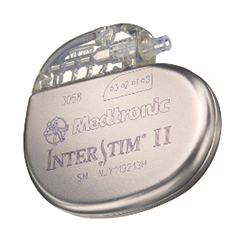 Bladder control problems affect 50 million Americans and are one of the most common health issues that women face. While many people may think that the condition only affects older women, the truth is that women of all ages may have symptoms related to an overactive bladder.
Bladder control problems affect 50 million Americans and are one of the most common health issues that women face. While many people may think that the condition only affects older women, the truth is that women of all ages may have symptoms related to an overactive bladder.
There are two main types of leakage: stress incontinence and urge incontinence. Women who have a combination of both stress and urge leakage are referred to as having mixed incontinence. (View my educational videos to learn more.)
Unfortunately, whatever form it takes, the impact of bladder leakage or overactive bladder symptoms can be debilitating. Women are often too embarrassed to share their symptoms or may not be aware that there are non-surgical options out there. This is one of the main reasons I became interested in focusing on our Women’s Bladder Control Center of Excellence here at PCUMC. There are many non-surgical solutions that you may not be know of! At our state-of-the-art bladder control center, we utilize a comprehensive team approach to not only diagnose and treat but also to help educate women on treating this common problem.
At PCUMC, Dr. Pugach and I spend time with our patients to review their medical history and voiding patterns (bladder diary), test their bladder function and review all treatments that are available for bladder control using a pathway that we have developed together. At the end of the discussion, we help you decide what the best solution is for you.
Bladder Matters…A Guide to Managing Overactive Bladder (Download Brochure Courtesy of Astellas)
URGENCY AND URGE INCONTINENCE PATIENT PROFILE
Recently, a 78-year-old women came to our Women’s Bladder Control Center with symptoms of with urinary frequency every 45 minutes to 2 hours. Her nighttime voiding frequency was 6 to 7 times. Much to her dismay, she wore an adult diaper that she changed twice daily. She was on bladder control medications but was experiencing side effects. This prompted her to schedule and appointment with us.
After further workup, our team determined that she had an overactive bladder. Various non-surgical options were thoroughly discussed, including alternative medications, acupuncture, an Interstim® or nerve stimulator and Botox injections. After careful consideration and discussion, she decided to try the Interstim® nerve stimulation test.
 During her Interstim® trial, she experienced a 50% reduction in leakage and decided to proceed with the Interstim® implant (or battery/pacemaker placement). In follow up visits, she noted further improvement with a 75% reduction in leakage, 50% improvement in frequency and only voided 3 times at night. She continues to do well at this time and is very pleased with her progress.
During her Interstim® trial, she experienced a 50% reduction in leakage and decided to proceed with the Interstim® implant (or battery/pacemaker placement). In follow up visits, she noted further improvement with a 75% reduction in leakage, 50% improvement in frequency and only voided 3 times at night. She continues to do well at this time and is very pleased with her progress.
Overactive bladder affects millions of women. It is important to know that early diagnosis and treatment leads to better outcomes. My goal is to help educate women on the various non-invasive solutions to their bladder problems so that they can continue to enjoy their normal daily activities.
I encourage you to call our office at (888) 735.4336 to schedule a confidential consultation.






Comments are closed.